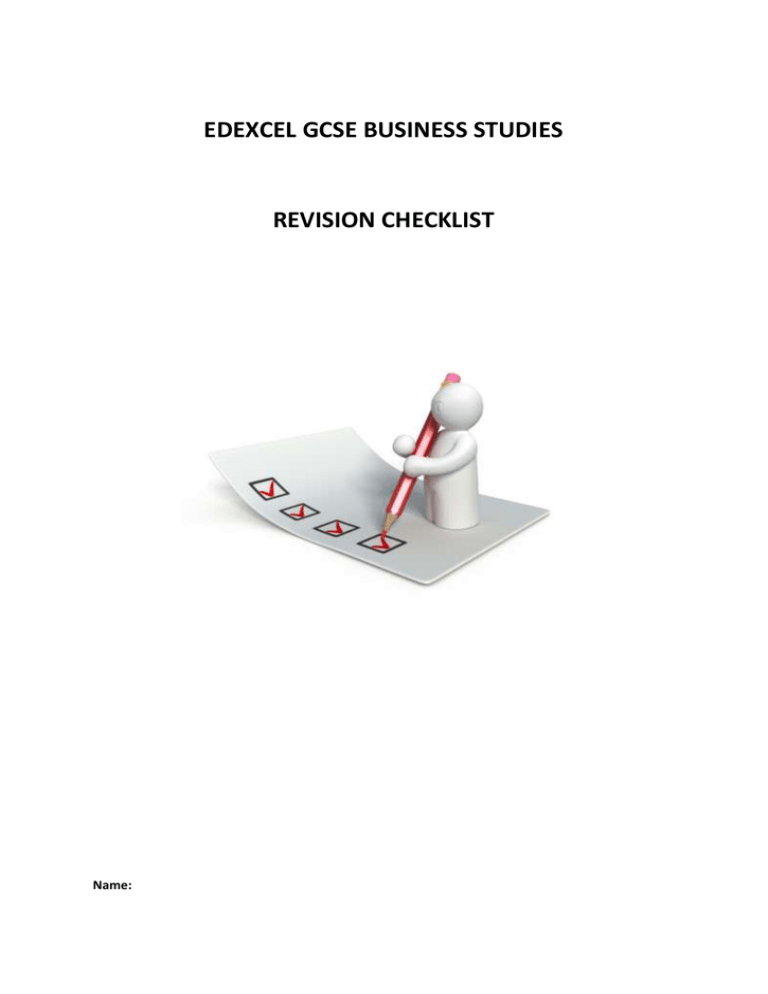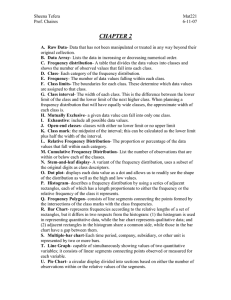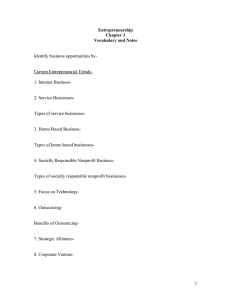Unit 1 and 3 revision checklist
advertisement

EDEXCEL GCSE BUSINESS STUDIES REVISION CHECKLIST Name: UNIT 1: Introduction to small businesses Topics Areas to Revise Unit 1.1- Spotting a business opportunity Entrepreneur skills/risks needed to start up Customer service needs- the importance of customer needs Market research- Primary/ secondary research how is it collected. Quantitative /Qualitative data- how is the data interpreted Customer demand Branding Market mapping- identifies market segments and market gaps. Competition- analyse rivals strengths and weaknesses Adding value- why is it important to business survival and success. Ownership- sole trader, Partnership, PLC, LTD, Franchise. Advantages/ disadvantages of using a franchise compared to other ownerships. Location- factors that to consider when locating a business Sectors- (Primary, Secondary and Tertiary) Unit 1.2- Showing enterprise Enterprise skills required- difference between a good and service Thinking creatively- develop a competitive advantage Invention and Innovation- difference between the methods Business risks and rewards Calculated risk- weighting of outcome Mind map- other important enterprise skills Protecting the product- Copyright, Patent, Trademark Questions entrepreneurs ask themselves before starting the business leadership, willingness, and qualities. Unit 1.3- Putting a business idea into practice Aims and objectives- financial and non financial objectives Estimating revenues costs and profits- how will the price/cost affect the business Sources of finance- Leasing/overdraft/mortgage/hire purchase etc long term and short term Cash flow forecast- what is cash flow, how to calculate one. Business Plan- content of a business plan Need further revision Revised fully Unit 1.4- Making the start up effective The marketing mix- (4 Ps) Price, Product Place and Promotion strategies The importance of limited liability- unlimited/limited liability Start up legal and tax issues- VAT, TAX, NI, employment legislations Effective on time delivery and customer satisfaction- why customers need to be satisfied, repeat purchase, customer loyalty. Word of mouth Recruitment and selection-Job advertisements, interviews, short listing, Training- on the job/ off the job /induction (advantages / disadvantages) Motivation- financial and non financial rewards. Unit 1.5-Understanding the economic context Market demand and supply- commodities Impact of changes on interest rates on small businesses and consumer spending. Fixed and variable rates Impact of changes on exchange rates- understand imports and exports How do business cycles affect small businesses- Recession, boom What effect do business decisions have on stakeholdersdifferent type of stakeholders in an organisation? internal/external UNIT 3: Building a business Topics Areas to Revise Unit 3.1- Marketing Marketing 4ps- Price, Promotion, Place and Product. Market research- Primary/ secondary research how is it collected. Quantitative /Qualitative data- how is the data interpreted Product trial and repeat purchase- Advertising, special offers and samples. Product life cycle- 6 stages Boston Matrix- Stars, Cash cows, Problem child and Dogs. Branding and differentiation Market mapping- identifies market segments and market gaps. Unit 3.2- Meeting customer needs Design and research development- Function, appearance and cost. Managing Stock- Stock control methods, buffer stock, and Just in time. Quality- TQM, Kaizen, Quality assurance and quality control. Cost effectiveness operations and competitiveness- improving Productivity ways of reducing costs. Effective customer Service- Meeting the needs of customers, staff training, dealing with complaints and effects of poor service. Meeting consumer protection laws- Sale of goods Act, Trade descriptions Act, and the reason for consumer protection laws. Unit 3.3- Effective Financial Management How to improve cash flow forecast- Changing cash inflows and outflows. How to improve profit- how to increase revenues and to reduce costs. Break even charts- to know how to create break even chart, calculate fixed costs, variable costs and total costs. how can a business use a break even chart. Finance Growth- Internal and external sources of finance Leasing/overdraft/mortgage/hire purchase etc long term and short term finance. Need further revision Revised fully Unit 3.4- Effective people management Organisational structure- hierarchy, chain of command span of control, delayering, centralised and decentralised. Motivation Theory- Maslow’s Hierarchy of needs, importance of motivation effects of poor motivation. Communication- internal and external communication, channels of communication, types of communication, effects of poor communication. Remuneration- ways staff are paid, salaries, piece rates, time rates, commission bonuses and fringe benefits. Working contracts- Freelance, self employed, part time, full time, permanent and temporary. Unit 3.5-The wider world affecting business Ethics in a business- morally right or wrong, in a business e.g. cheap labour, damaging the environment. Pressure groups- what are they and how can they affect a business. Environmental issues- short term and long term effects, traffic congestion, air noise and water pollution resource depletion. Economic issues affecting international trade- imports protection, taxes, quotas, tariffs and subsidy, Income, wages quality of products and trade in UK and abroad. The impact of government and the EU on business- regulations, taxations, minimum wages, maternity and paternity rights and health and safety regulations.







